The nose takes center stage on your face, and is often the first facial feature other people notice. Rhinoplasty and Asian rhinoplasty have continued to grow in popularity, as technical refinements have allowed ever-improving cosmetic and functional results.
Rhinoplasty is one of the oldest procedures in facial plastic surgery, dating back thousands of years. Today, it is the most popular cosmetic procedure for men, and the second most popular procedure for women. Rhinoplasty requires both specialized surgical skills and a finely-tuned artistic eye to achieve a result that is attractive, natural, and balanced with each individual’s unique facial features. In addition, maintaining and improving the nasal function is a critically important part of successful rhinoplasty.
Some rhinoplasty surgeons try to generalize Asian rhinoplasty to mean reshaping noses that usually have bulbous, short and upturned tip, wide and flat nasal bone. However, in many ways this perspective is too simplistic and limited. The lower lateral cartilage, or tip cartilage, tends to be softer and less rigid than other ethnicities, and often is shorter in overall length. Tip shape, size and projection is determined by the intrinsic characteristics of the tip cartilage, and these characteristics many times result in a tip that may be bulbous, wide and under-projected. The nostrils may also appear to “flare” due to the convexity of these cartilages.
Dorsal height, or the height of the “bridge” of the nose is usually low and wide in most Asians determined by the size, shape and orientation of the nasal bones, as well as the cartilage in the middle vault of the nose. In some Asians, the nasal bones have an oblique (more horizontal than vertical) orientation, and simply fracturing the nasal bones will not allow them to be narrowed sufficiently. In these cases, the dorsum must be augmented to allow better definition of the bridge, and create a more attractive profile and a more refined frontal view.
Closed (Endonasal) approach
Advantages
- No scars on external surface of nose. Scars are more visible on Asian skin and Asians tend to hold strong prejudice against scars
- Less swelling and faster recovery
- Short operation time
Disadvantages
- Narrow and limited surgical view
- Wide variation in the surgical procedure
- Limitations in tip plasty especially in Asians who have a large amount of tissues at the tip, and weak/small alar cartilage
Indications
- Closed approach can be used for most dorsal augmentation, hump reduction, osteotomy and tip plasty procedures
- However, there are limits to the closed approach in correcting long nose, severely bulbous tip, short nose, and deviated nose, which are recommended to use the open approach
Before & After Photos
.png)
.png)
.png)
.png)
.png)
.png)
Dr. Prinya chooses the ready-made soft I- and L-shaped silicone implant that suits ur face and your desire. He uses Softxil (Bistool brand) from Korea and Implantech from USA for your nose, and each type has a specific purpose and application.
Silicone was the first synthetic implant, or Alloplast, to achieve widespread use in facial plastic surgery. The implant is nonporous and the body surrounds it with a thin capsule after implantation. Medical-graded silicone as a columellar strut implant has been successfully used to correct columellar retrusion, improve the nasolabial angle, lengthen nose and increase tip projection by elevating the medial crura of the lower lateral cartilages. Silicone nasal implants for nasal augmentation are available preformed in "I" and "L" shape. The "L" shaped one extends to the tip and down through the collumella, create a nice pointed, tear-drop shaped tip. However, it can lead to extrusion, especially in who have thin skin over the tip. Therefore, I prefer placing homologous tissue (Acellular matrix, Surederm) or autogenous cartilage from ear or nasal septum or rib cartilage at nose tip to prevent extrusion from the pressure of the L-shaped implant.
Silicone implants, even ready-made ones, nee to be sculpted in order to fit with the patients' nose. The starting point of implant should be at the double eyelids for Caucasians, but at the pupil level or eyelashes in Asian patients for a more natural look. Patients with protruded forehead need implants to start at a higher point, while patients with flat foreheads need a lower starting point.
Other synthetic implants available to surgeons include meshed polymers such as Mersilene (Polyethylene terephthalate), Medpor, Gortex, metals and alloys, and Calcium Phosphate Cement.
Medpor is a polyethylene implant, which is porous and allows the body to grow tissue into the implant. Surgeons using this implant will note that tissue in-growth helps keep the implant in place, however this can lead to complications rendering its removal very difficult. Once the implant is placed in the nose, the patient's tissue grows into the body of the implant within a few months. Should the implant get infected or should the patient want to change the implant for any reason, removal of the Medpor Implant is extremely challenging and could mean severely traumatizing the tissue in the implant and around it resulting in destroyed localized tissue and possible deformity. In fact, Medpor can become integrated into your nasal bone causing further difficulties in potential removal.
Gore-Tex is not adequate to build dorsal height. This implant is porous and comes in the form of sheets, which are required to be stacked on top of each other to create any volume or elevation in the nasal bridge. Since Gore-Tex is porous, there is tissue in-growth which raises the same potential complications as with the Medpor Implant. Conversely, the silicone implant is not porous, is one solid piece, is extremely versatile and offers superior structural support to the nose, and it can be removed if the patient so desires, without the attendant risks with a porous implant.
Silicone is most commonly used because it has no morphological change, a core requirement for an implant, and has minimal changes in height that offer greater predictability. The most tell-tale signs of surgery are skin redness, visible implant margins, and thinned skin. Soft type silicone looks more natural.
1. My personal indication of silicone implant
a. Primary implant in general augmentation
b. Thinned skinned dorsum
c. in case of osteotomy
2. My personal indication of Goretex implant
a. Secondary case with contracted nose, calcification on the surface of silicone, or late spontaneous hematoma in silicone implant
b. Patients showing foreign body reaction to silicone
c. Patient's preference
Ear Cartilage Placement at Nose Tip
AUTOLOGOUS GRAFTS
Autologous graft materials include:
1) nasal septal cartilage
2) ear cartilage (auricular conchal cartilage)
3) rib cartilage (costal cartilage)
4) fascia (deep temporalis fascia)
During your consultation, you will have a comprehensive external and intranasal examination of your nose. He will then sit down with you and create personalized computer imaging of your nose based on your aesthetic goals and determine which combination of surgical techniques and grafts will be necessary to achieve your ideal profile line and the most attractive nose for your face.
Not all surgeons are equally comfortable harvesting each of these grafts, and this is another reason pre-made Silicone and Gore-tex implants are so popular. Nasal septal cartilage is the cartilage between the nostrils, and a small portion can easily be removed without visible incisions to provide material for grafts. Ear cartilage is harvested through an incision hidden in the crease behind the ear, and does not change the size, shape or appearance of the ear.
The nasal septum provides relatively straight, strong, cartilage and is a good source of creating grafts to project, support and refine the tip of the nose. When dorsal augmentation is desired (building the bridge of the nose), and often during revision rhinoplasty, additional cartilage is usually required. Ear cartilage is soft, and provides a great source of tip refining grafts and for mild to moderate dorsal augmentation. When more dramatic tip refinement, tip projection or dorsal augmentation is desired, rib cartilage is the preferred choice as it provides the greatest strength and the most volume of cartilage for maximal change.
Fascia is harvested through a small incision hidden in the hair above the ear, without shaving or cutting any hair. The incision is closed with surgical clips for 1 week, and once these clips are removed a week after surgery most patients forget anything was done in this area as it is hidden in the hairline.
ALARPLASTY
(Nasal Base Reduction)
for smaller and raising wings upward
.png)
Before After
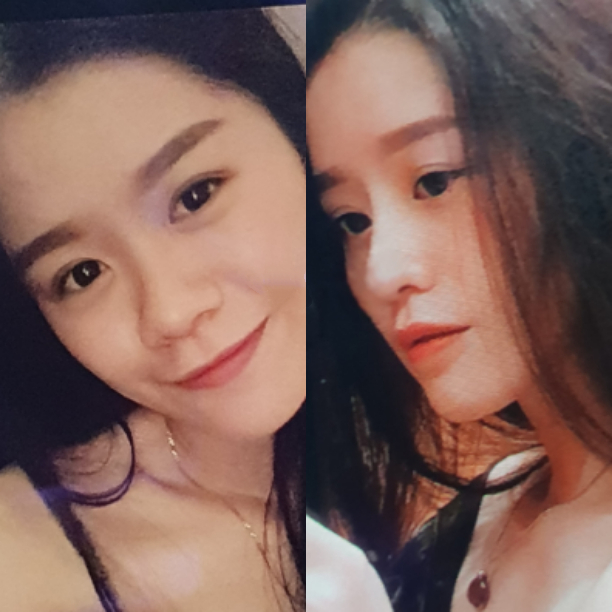
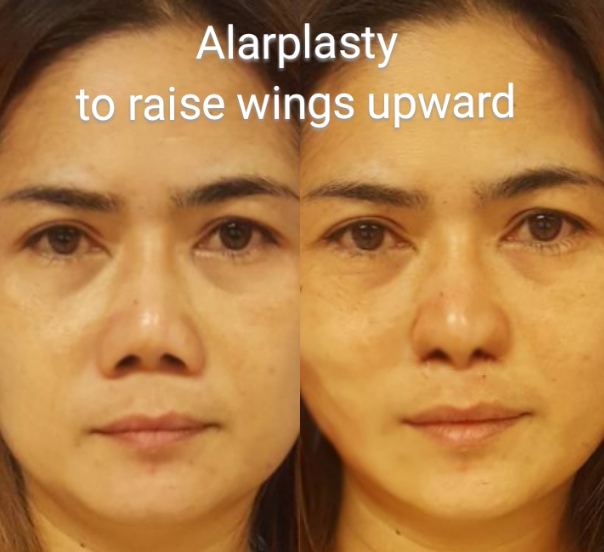
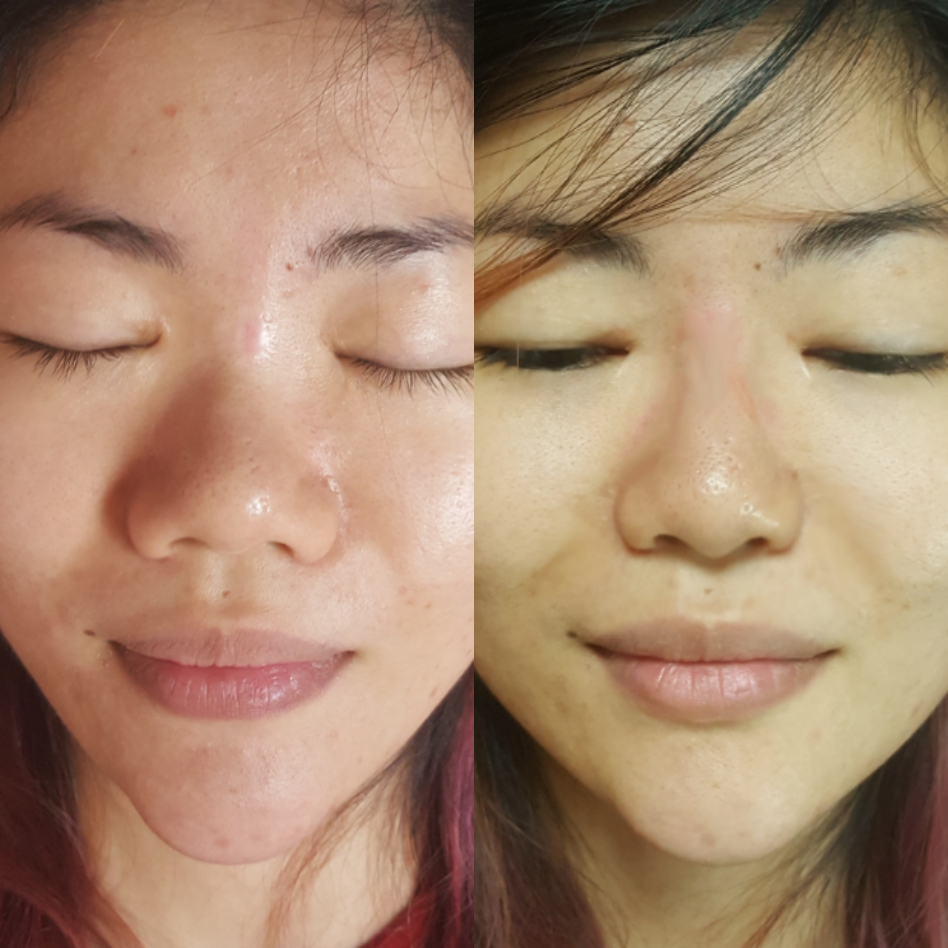
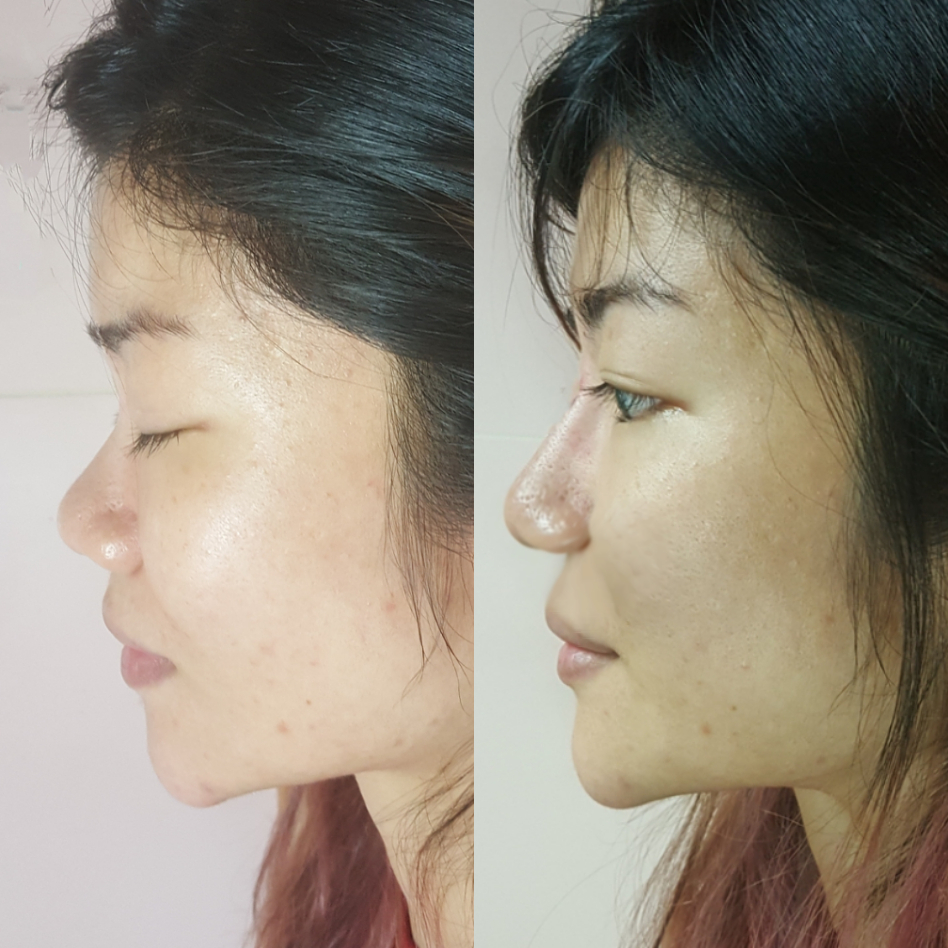
.png)
.png)
.png)
.png)
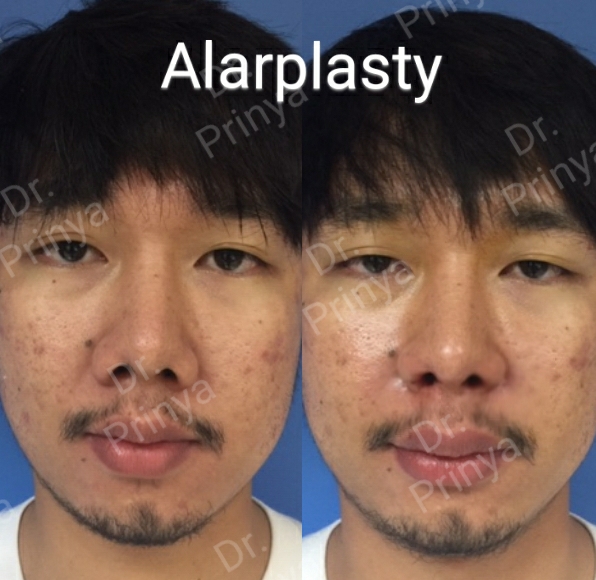
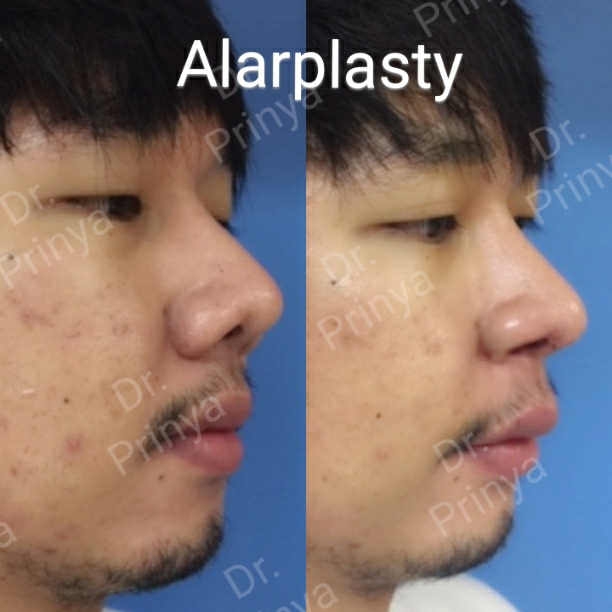
.png)
.png)
Alarplasty from Outside Cuts
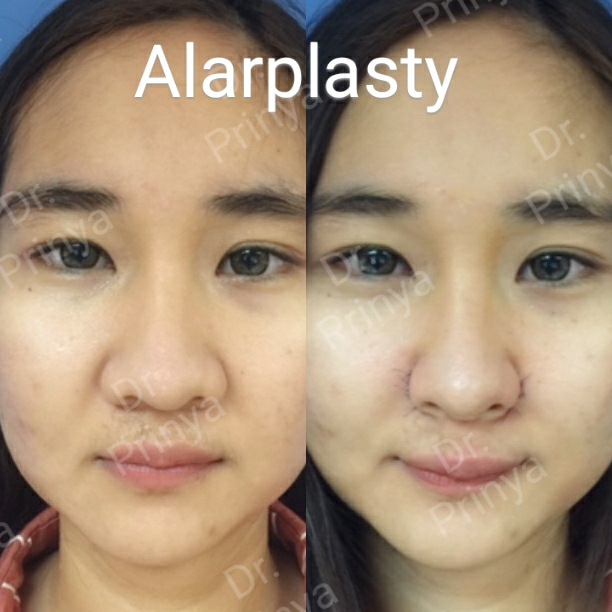
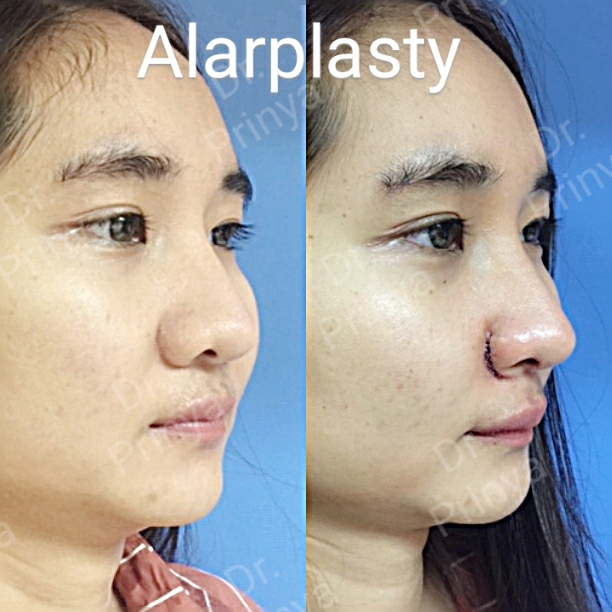
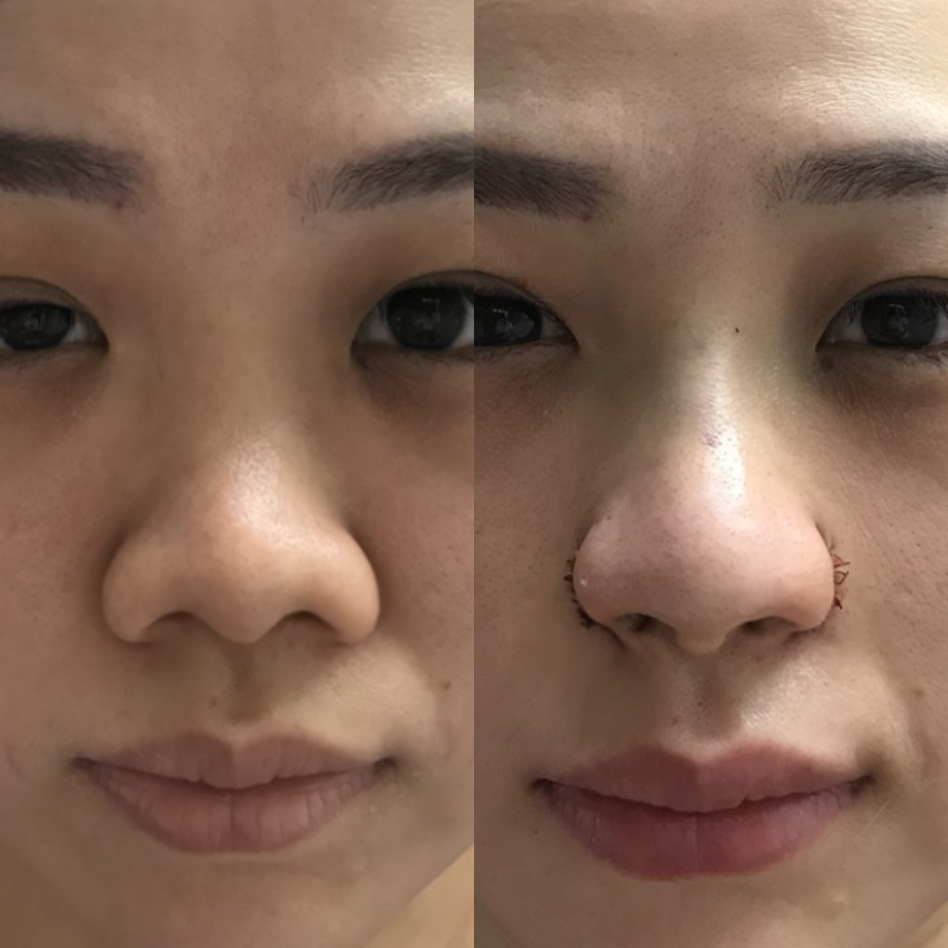
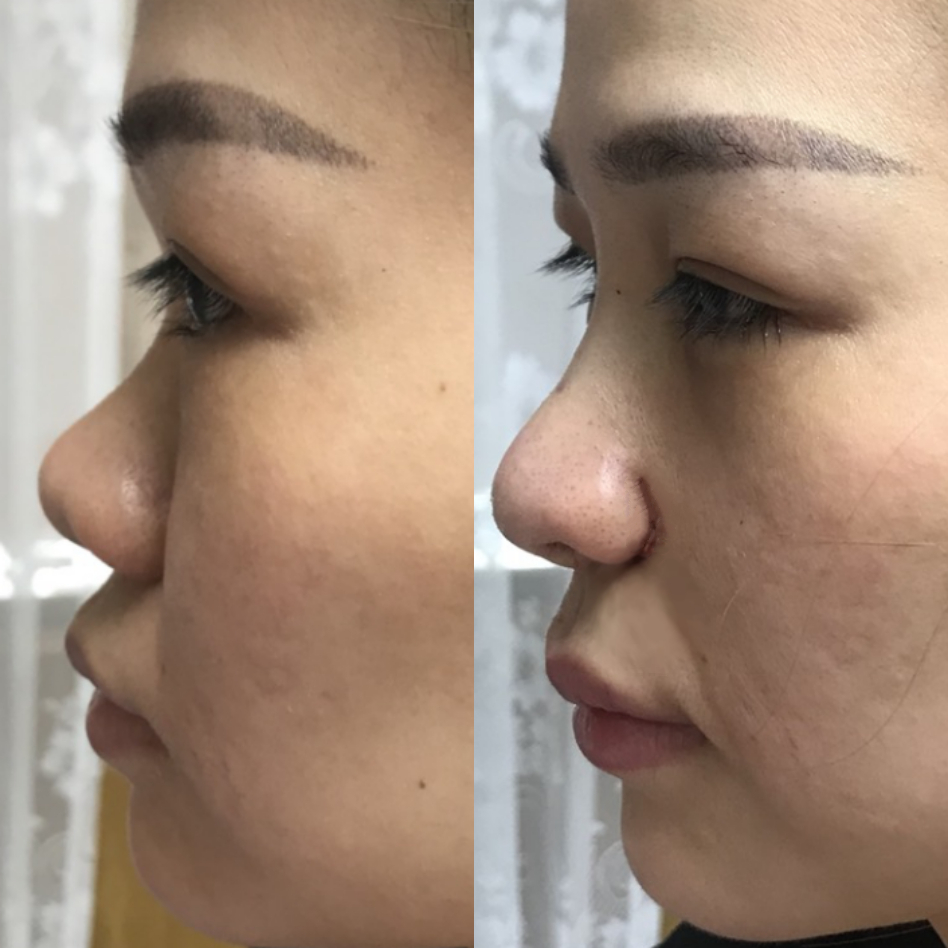
.png)
.png)
What is an alarplasty?
An alarplasty reduces the wings' size and adjusts the size and shape of the nostrils by removing a predetermined amount of soft tissue. It involves the alar region of the nose — the flexible, soft tissue that extends outward from the nasal tip to the face. Above the alar region lies the area popular for nose piercings, and just outside of there is the alar crease. Looking up at the nostrils, one can see the alar base which makes up the width from the right alar to the left alar. Alarplasty augments or reduces this part of the nose.
How is an alarplasty performed?
To perform an alarplasty, an incision is made either outside or inside the right and left alar (base of nose) regions or both cuts, and then removes a section of tissue from each side. Finally, the surgeon closes the incisions with sutures. The stitches are absorbable which will dissolve spontaneously in 2 weeks without the need for removal. No changes are made to the bone or cartilage, so the underlying structure of the nose is not affected. It’s only the nasal flare that changes.
The operation usually takes about 30 minutes. The procedure is painless due to intravenous sedation with local anesthesia, so patients will sleep well through. Post-surgical scars are well-hidden because all incisions are made in the alar crease. Swollen base of nose lasts for 1 week. Stitches are absorbable without need for removal.
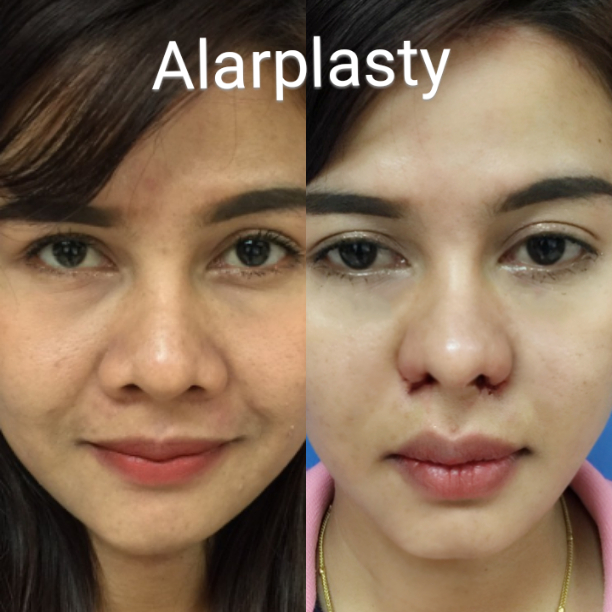
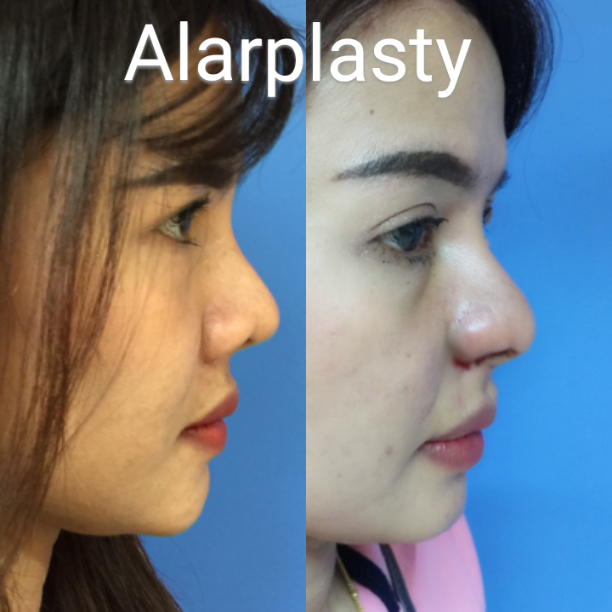
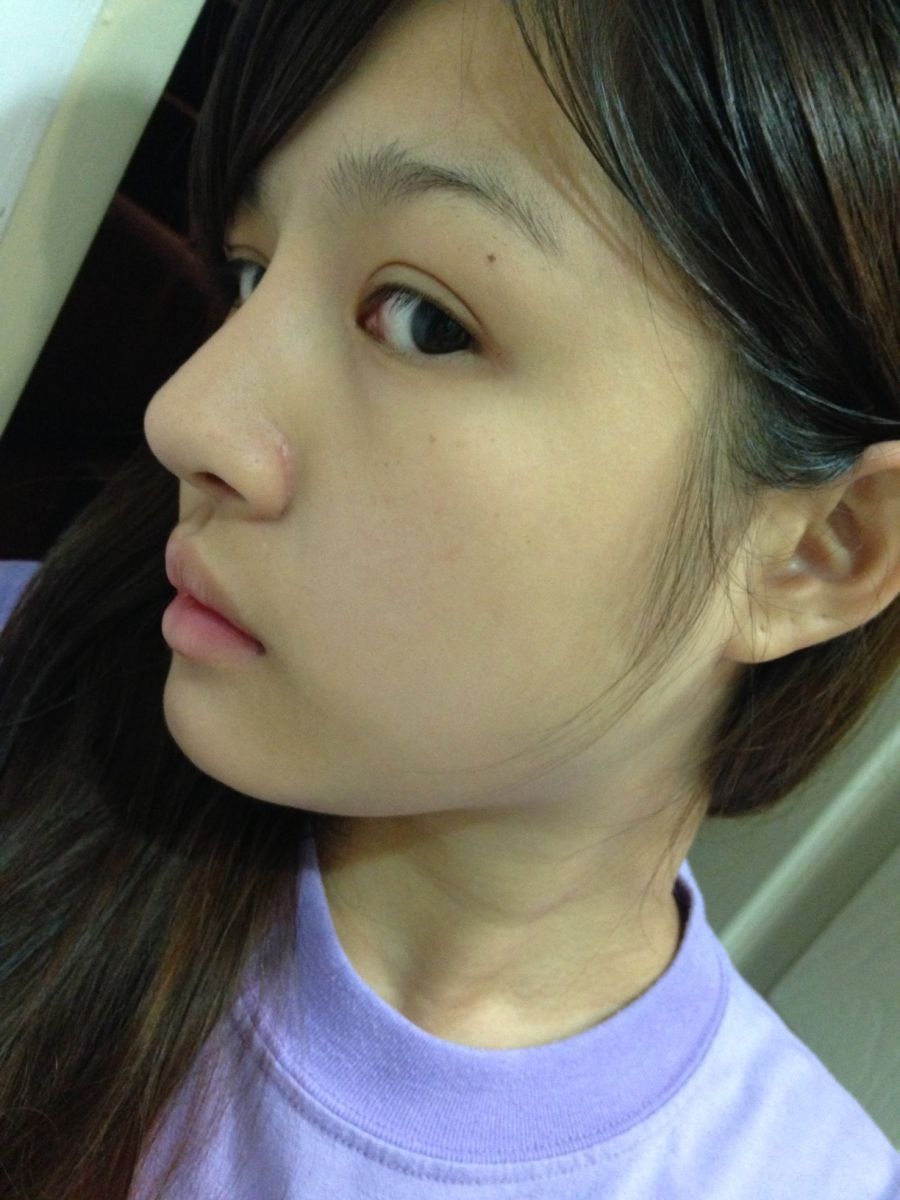
.png)
.png)
.png)
OPEN RHINOPLASTY WITH TIP PLASTY
FOR CORRECTION OF BULBOUS TIP
.png)
.png)
.png)
.png)
.png)
.png)
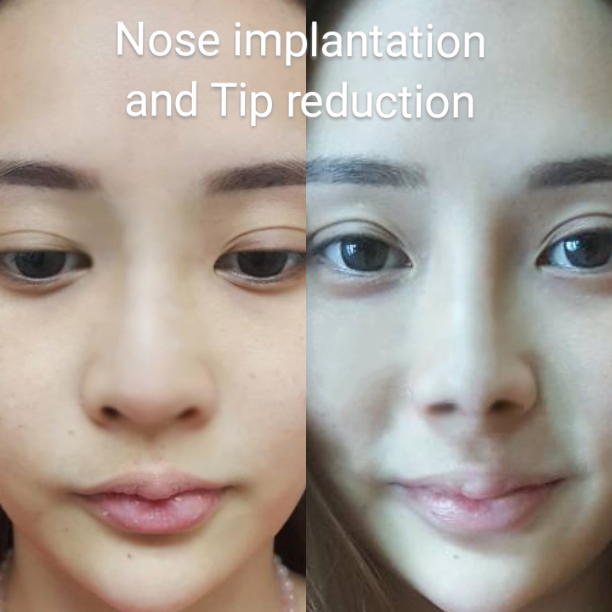
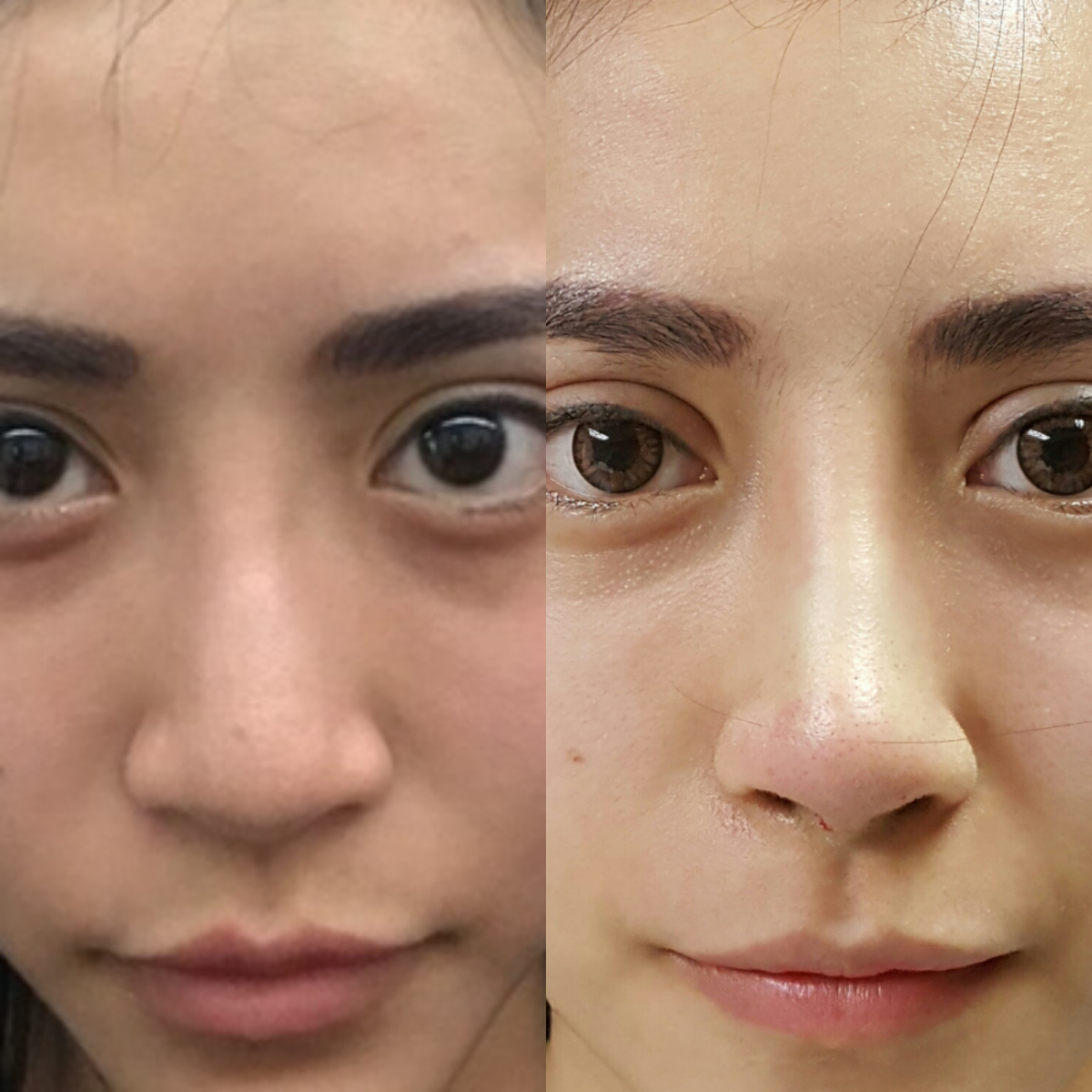
Tip Plasty
.png)
.png)
.png)
.png)
.png)
.png)
.png)
Male-Nose
.png)
.png)
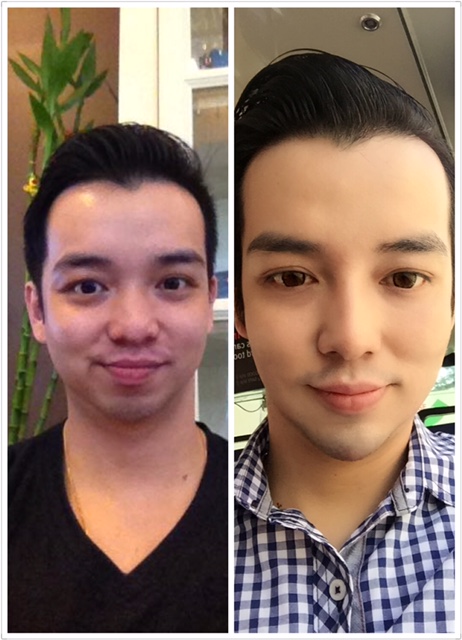
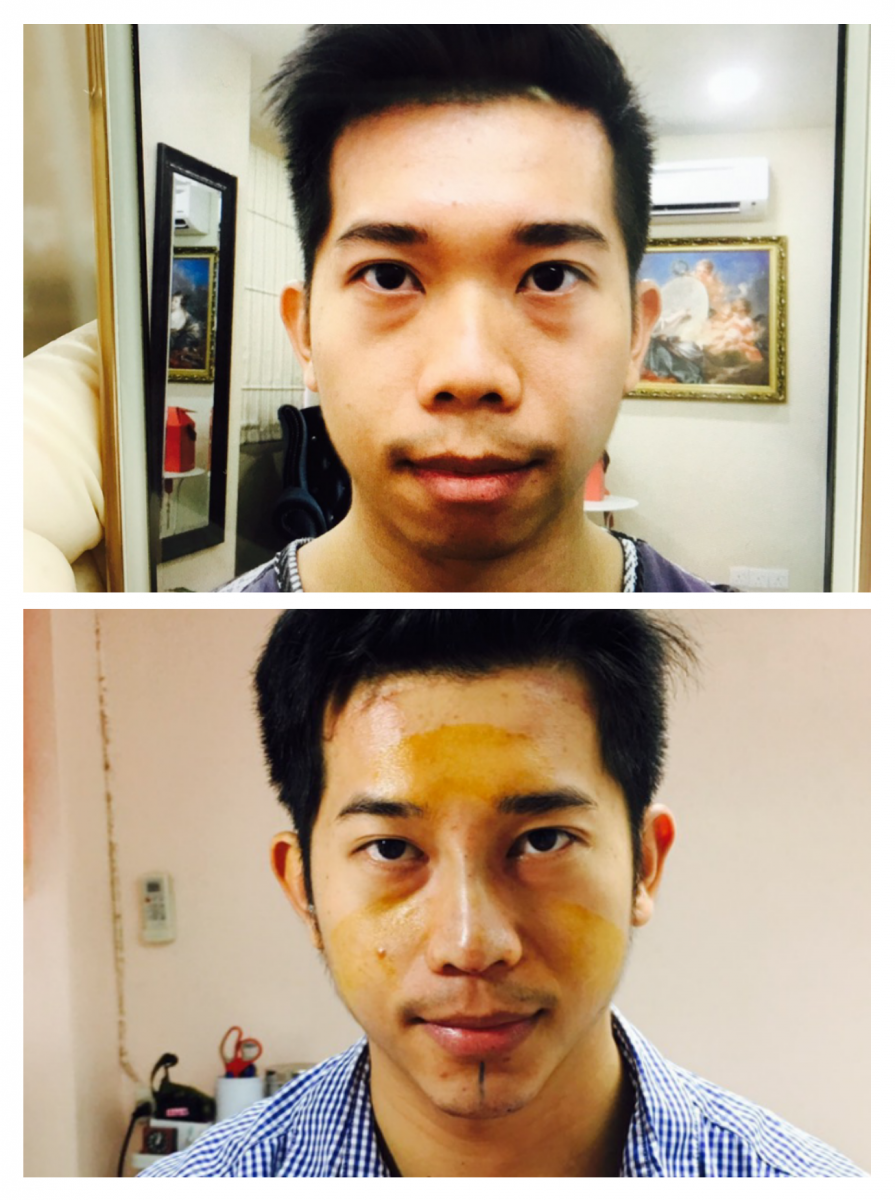

.png)
.png)
.png)
.png)
.png)
Nasal Hump Removal
.png)
.png)
.png)
.png)
.png)
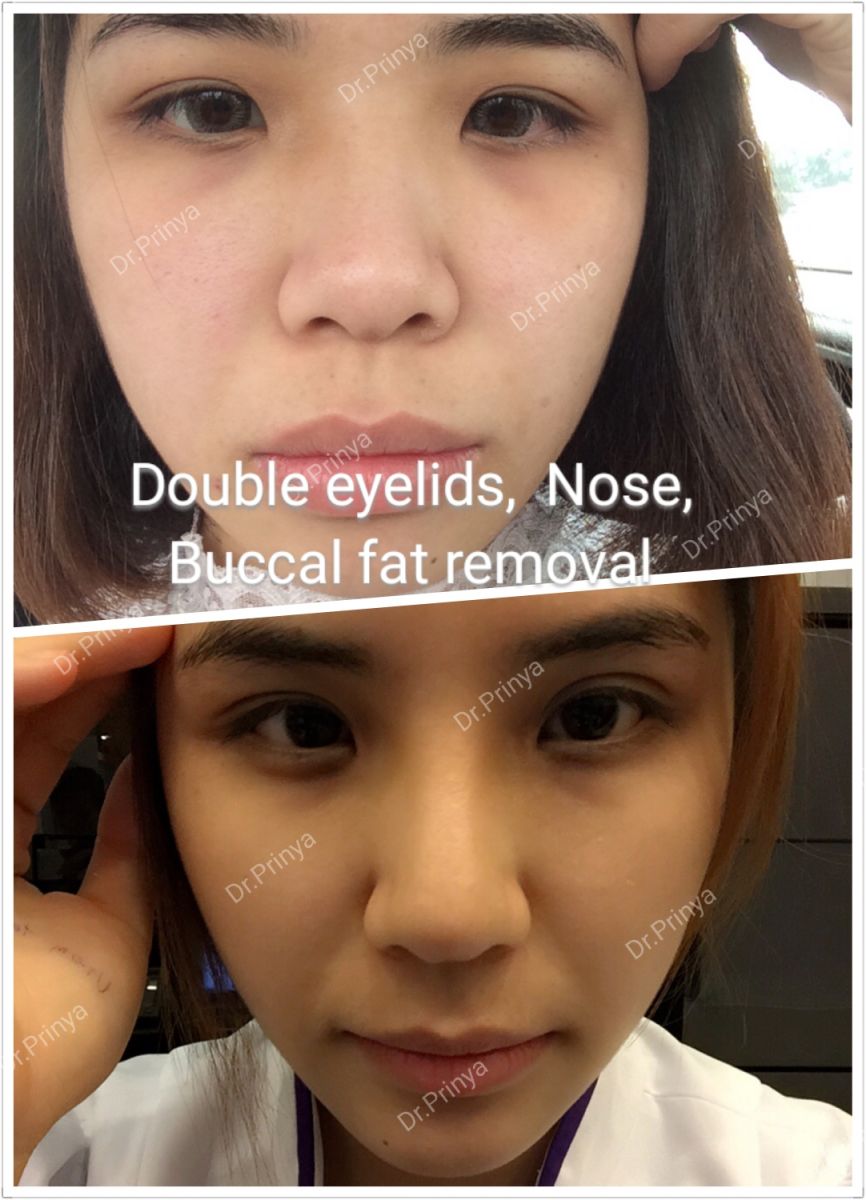
.png)
.png)
.png)
.png)
Non-Surgical Nose Enhancement
1) Filler injection; Dr. Prinya uses Juvederm voluma for this purpose. The result will last for 2 years. 1 cc costs 10,000 THB and nose usually needs 1-1.5 cc.
2) Thread lifting; Dr. Prinya uses big barbed threads, Misko brand from Korea, which has special design for bridge enhancement and tip projection. The result will last for 5 years or more. The cost is 10,000 THB for 10 threads.
Surgery information
Prices: Closed Rhinoplasty: 1) Nose Implantation-15,000 THB 2) Alarplasty-7,000 THB 3) Ear cartilage or Surederm placement at tip-15,000 THB
Open Rhinoplasty: 1) Bony hump removal, medial or lateral osteotomy for narrowing the widened nose - from 30,000 THB 2) Open rhinoplasty with tip plasty for smaller and pointed tip - from 30,000 THB
Anesthesia: Intravenous Sedative Injection (Put to Sleep) with Local Anesthesia
Surgery hour: about 1-2 hours
Hospitalization: Not necessary.
Stitch removal: Not necessary due to absorbable stitches are used
Recovery time: Return to work in 1-week time. Daily activity and water exposure after 3 days. U can return to work within 1 week but avoid exercises for 2 weeks.
Swelling: Swollen and bruised nose usually lasts for 1 week. Cold pack compression is helpful for pain and swelling relief.